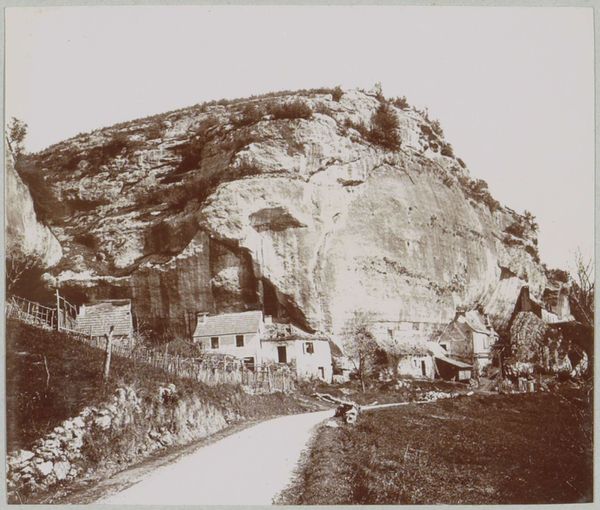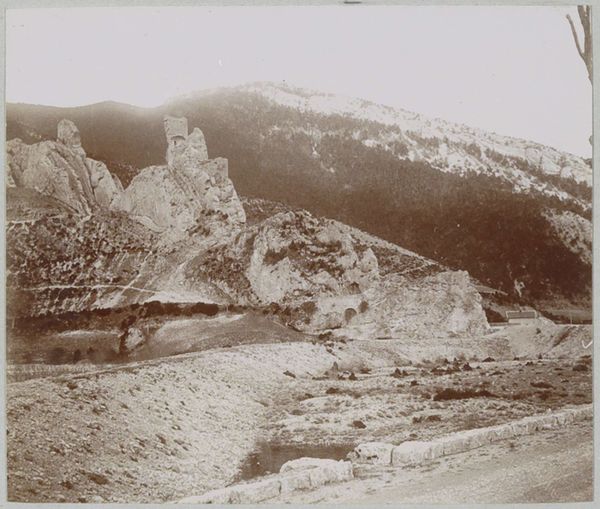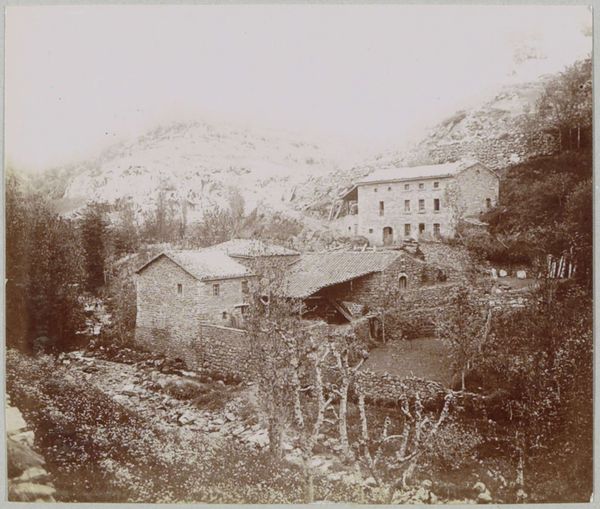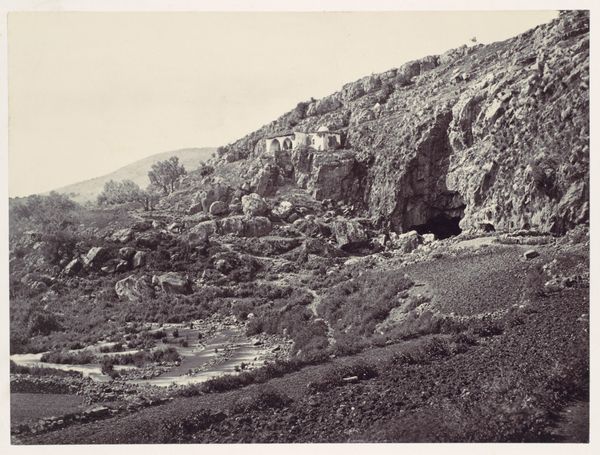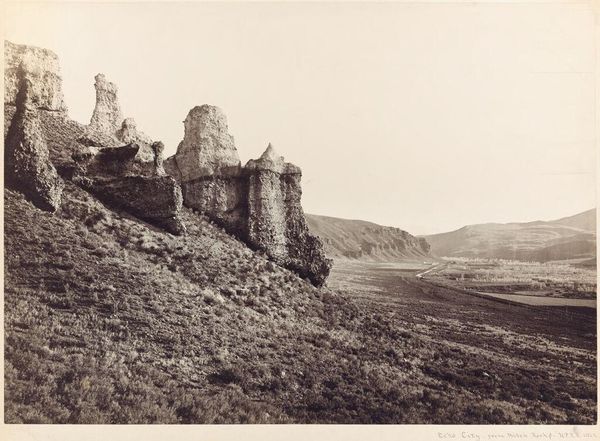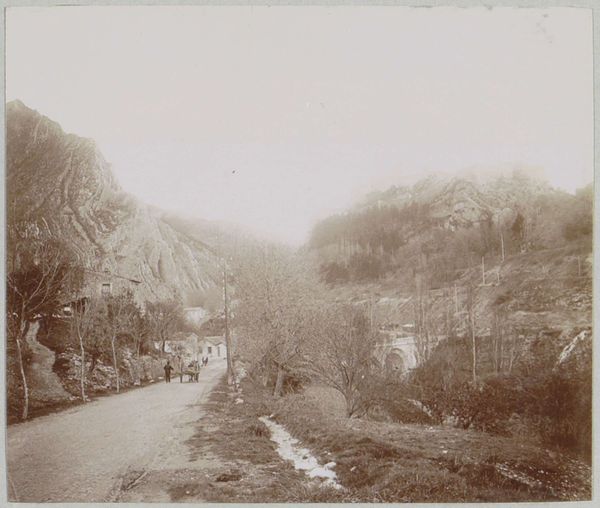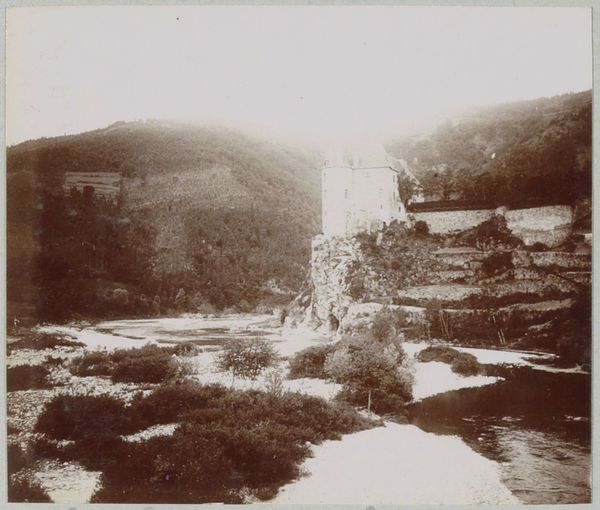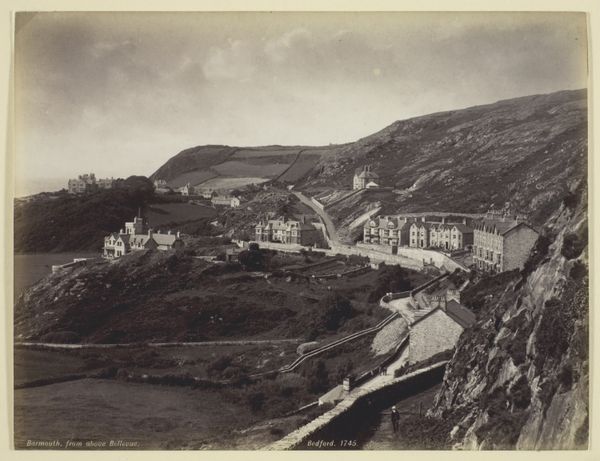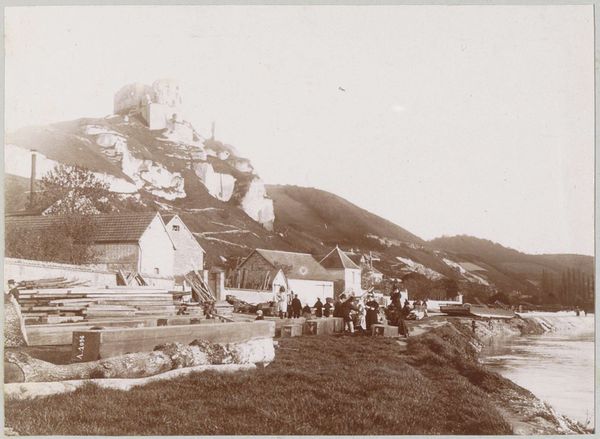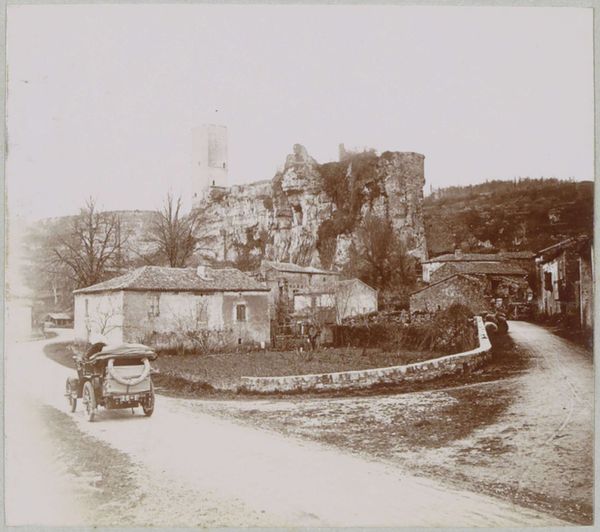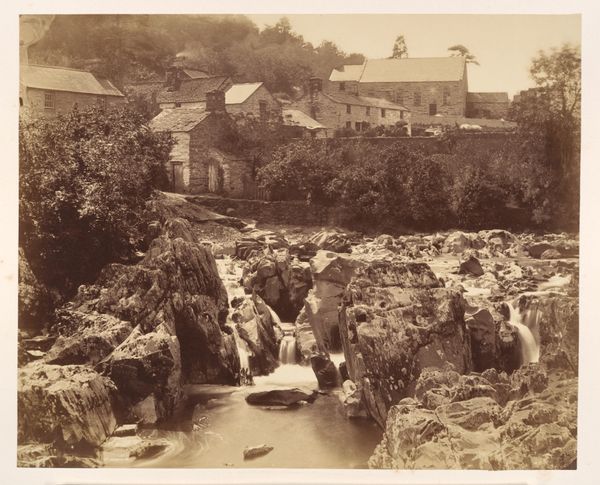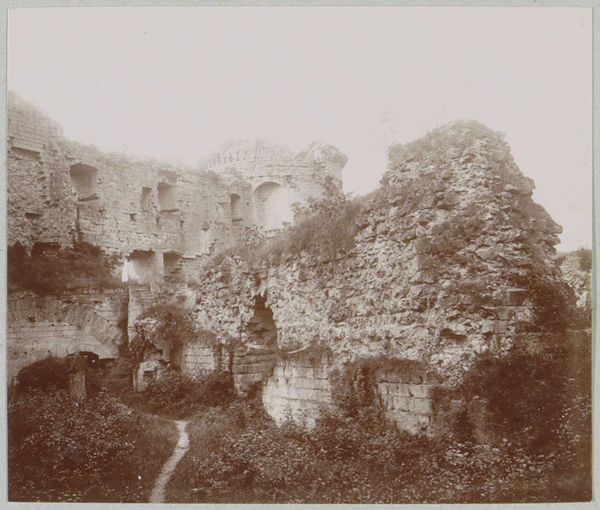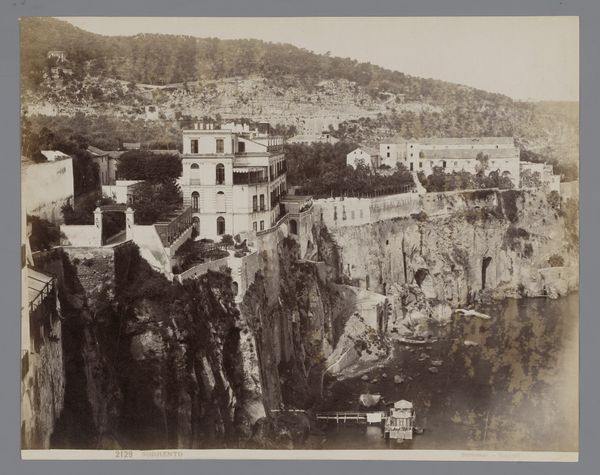
photography
#
landscape
#
photography
#
realism
Dimensions: height 70 mm, width 82 mm
Copyright: Rijks Museum: Open Domain
Curator: Standing before us, we have an early 20th-century photograph titled "Gezicht op huizen en rotswand van Les Eyzies-de-Tayac-Sireuil," taken in 1904. Editor: Immediately striking is the image’s palpable weight. The looming rock face overshadows everything, both literally and symbolically. Curator: Indeed, there's a dialogue at play. Observe how the photographer, Delizy, juxtaposes the rigid geometry of the dwellings with the more imposing natural form. It's about structures, forms, and contrasts between hard and soft textures. Editor: But isn’t that contrast inherently about labour? To cut stone, build walls, compared to the slow, geological processes carving that cliff-side. The hand-built elements here feel diminutive in comparison to the magnitude of raw nature. It’s about the making, how one imposition acts in stark relationship to nature. Curator: Certainly, you raise valid material concerns. However, the formal arrangements contribute equally to the effect. See the light playing off of both the facade of the buildings and rock surface, offering moments of visual parity. Note how the sepia tones contribute a classical quality to the photographic space. Editor: While that’s there, don’t forget about where and how this image sits within an economic and class framework. How often would one witness a natural setting photographed with the workers themselves in view and foreground? It is absent of such human figures and elements. What statement, silent or not, does that suggest? Curator: I concede that it refrains from showcasing explicit figures. And, yes, there's the implication of absence as its own form of presence, especially considering it was conceived when photography began engaging wider social subjects. But in any case, one can perceive in its nuanced gradations a balance. The stark white walls almost emulate aspects of the rougher surface of the rocky bluff looming nearby, allowing us a glimpse into one structure mimicking aspects of the other. Editor: In the end, even in stillness it’s impossible to divorce this scene from production: shelter built under the protective presence, or threat, depending on how you regard that monumental overhang. Each object and plane implies a degree of transformation, either by the force of time or the tools of humankind. Curator: Quite true, a rich interplay captured and immortalized in monochrome. It leaves the modern observer pondering the relationship between nature and culture. Editor: An interesting slice of time to revisit to interrogate our current relationships between built environments and resource extractions.
Comments
No comments
Be the first to comment and join the conversation on the ultimate creative platform.
